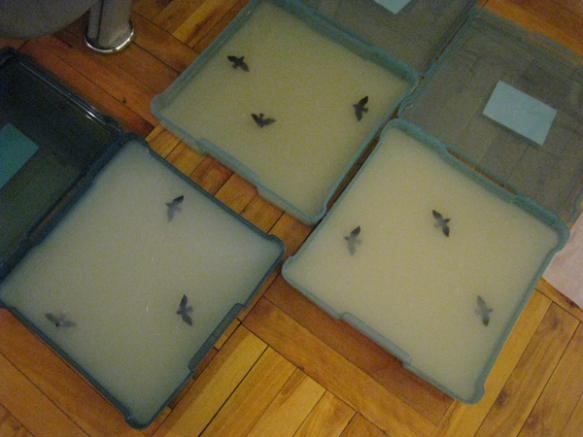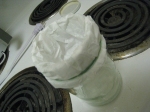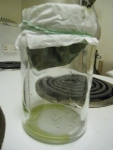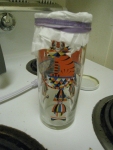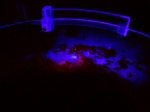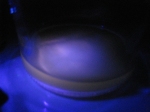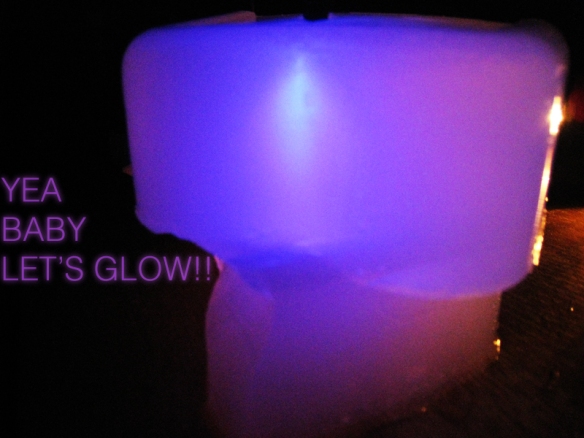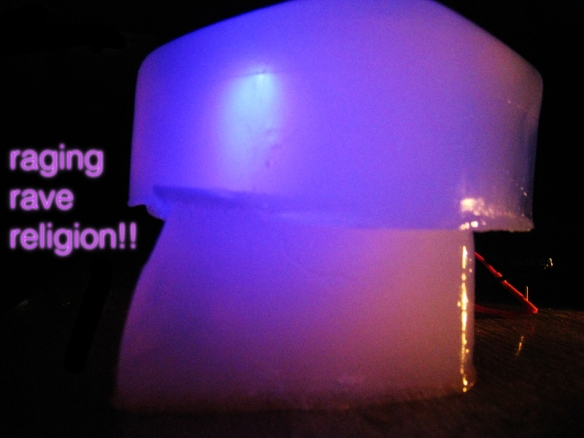…. I think I’m my own worst enemy sometimes. I couldn’t let the project drop, not because of the criticism (which was very valid) but because I felt the execution and everything was not up to my standards. At the same time I was being deluged with Finals(tm) and I didn’t have the time, energy or resources to do it again. So I told myself, the moment my main Finals were over I would redo it until I was happy with the result.
I made smaller sized version of the piece, and lit/shot it in the bathroom. I think the last is so blue because you can really see the interior of the agar + UV, which is a nice contrast to the cold-warmth-cold-warmth of the exterior. I’m not sure how clearly the ravens (black objects inside) came through – how visible/identifiable they were, but I like that you can at least see the suggestion of it.
[reflection]
This semester has been both unbelievably exulting and stressful at the same time. I felt so free to work on what I loved, but at the same time I was doing SO. MANY. THINGS. that I couldn’t process or enjoy or do it to the best of my ability. I just wanted to do everything, and that meant that the quality of work suffered. I really felt like I could’ve pushed it even further, but the pressure to deliver on time (for all projects) meant that I cut corners….. to my utmost regret.
And yet at the same time, this semester feels so vastly different from last: it’s almost like I got my rhythm back, ideas coming out faster than I can manage it – it’s a wonderful feeling but it made me so high-strung and skittish and hyperaware that I almost couldn’t do anything. But you know what? it was cool. I learnt lots of stuff. I organised my first exhibition in NY. I had great fun and most of all I really experienced so many things and met so many people that I wouldn’t trade for the world
Maybe the best way to sum it is this: I bought my first pair of sneakers after 7 years, turqoise blue with yellow stripes. I bought it because I wanted to be able to run, to sprint, to feel the closest I have to wings in air, the rush of wind to the face because now I have places to run to, people to run for……
Each season of winter, comes a year of fallow – the dead earth lies asleep with powers underneath, gathering a storm and burst into a brilliant spring.





